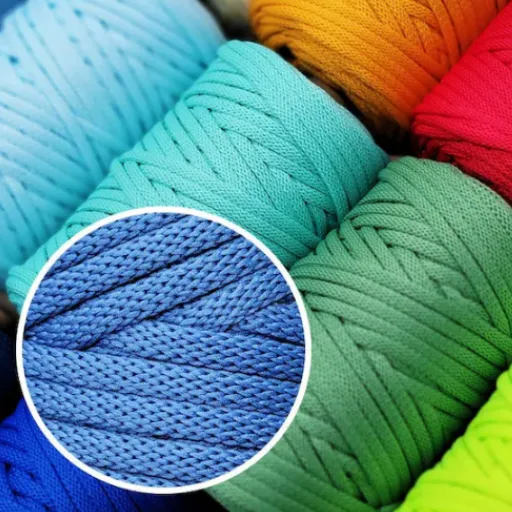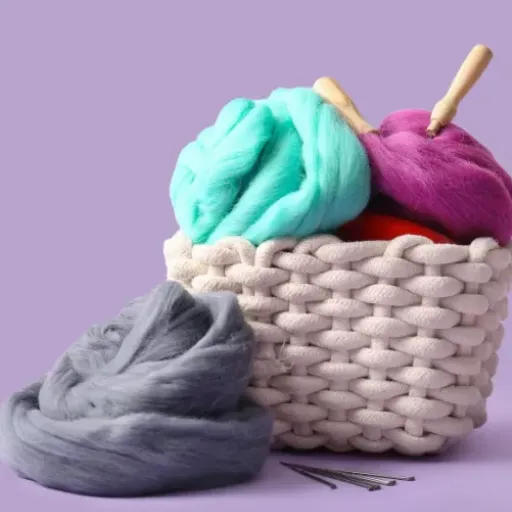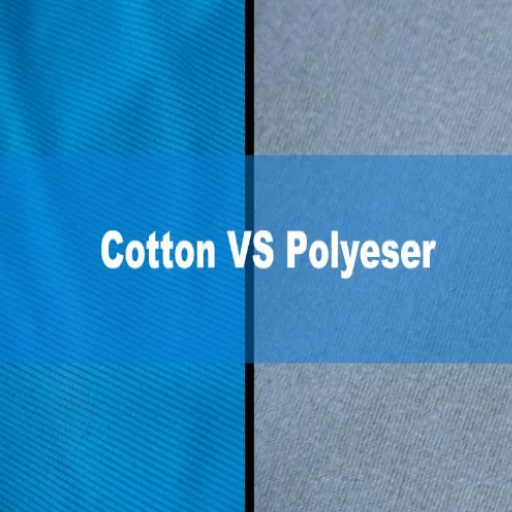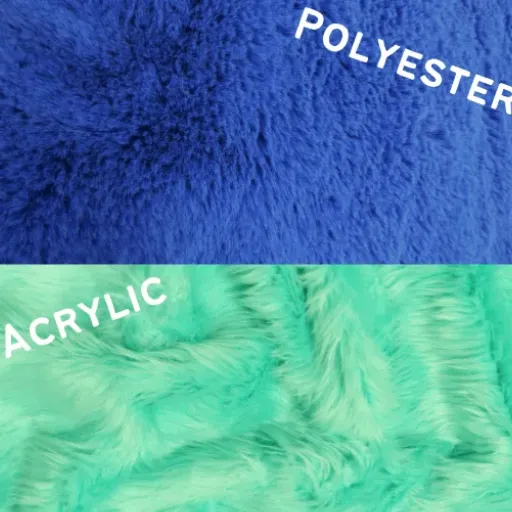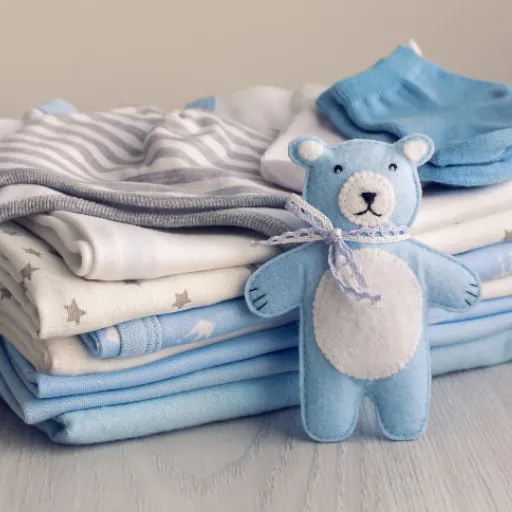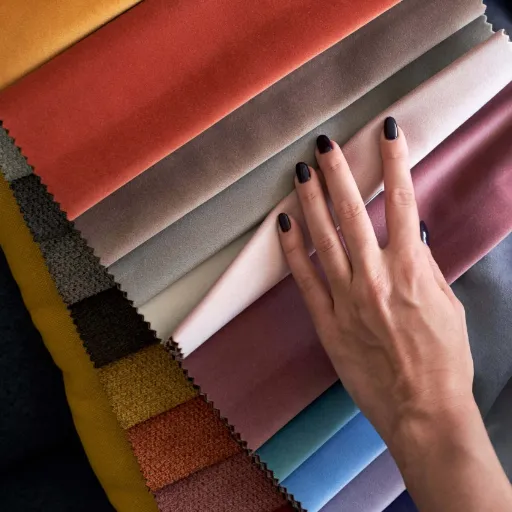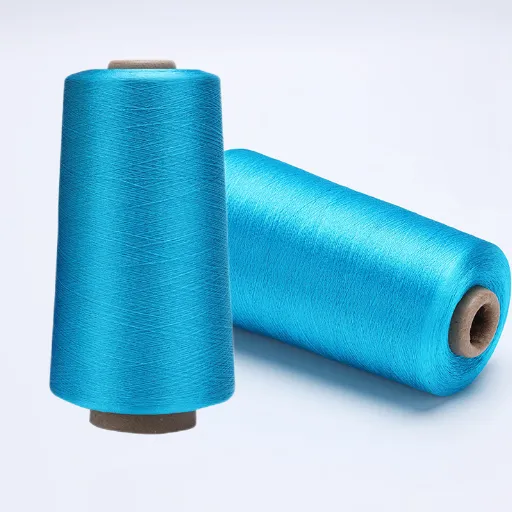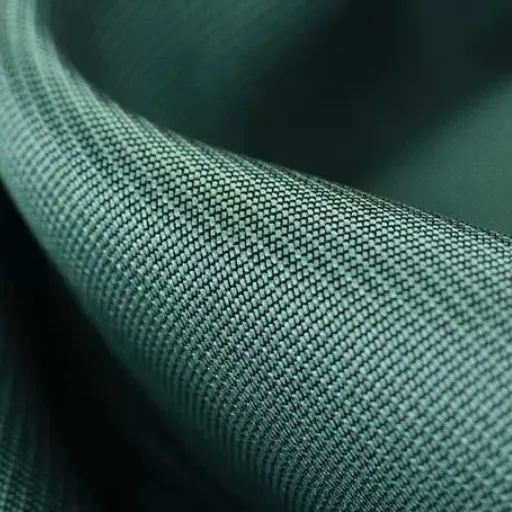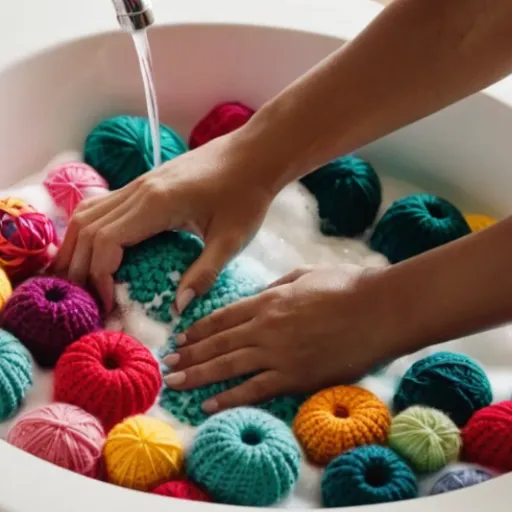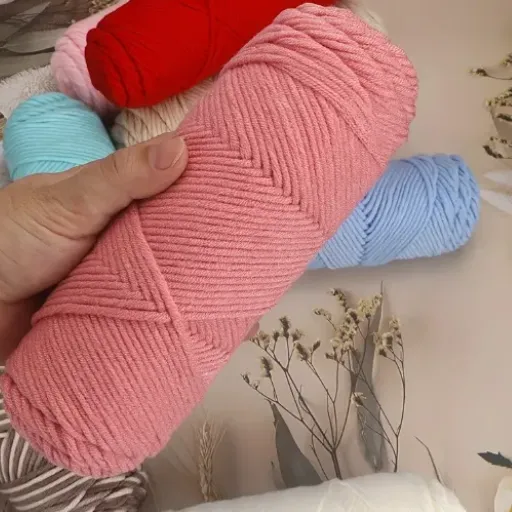Rayon viscose yarn has come to be a somewhat all-purpose and necessary fiber in the textile industry, famous for its softness, durability, and adaptability. From haute couture to casual wear, this yarn has become the designer and manufacturer favorites. So, why would rayon viscose yarn be so popular? How might its varieties, modal and filament, influence their performance and uses? This guide takes the reader into the world of rayon viscose yarn, unlocking its unique properties, differences between modal and filament, and its influence on modern textiles. Are you a textile enthusiast, a designer, or are you merely curious about this radical fiber? This write-up guarantees you a thorough exploration of what makes rayon viscose yarn an iconic staple in the fabric world.
Understanding Viscose Yarn
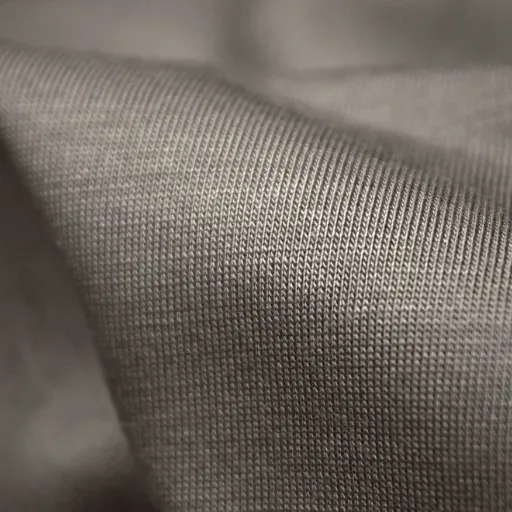
What is Viscose Yarn?
From regenerated cellulose, usually extracted from natural raw materials such as wood pulp, viscose yarn is, in fact, a fiber. It is thus termed a semi-synthetic class of fiber, as its origin lies in a plant source, but requires extensive chemical processing to be transformed into workable yarn. These fibers turn out to be soft, smooth, and more adaptable, hence making it the favorite choice for textile industries.
Providing one more example of the truly versatile textile fiber, viscose yarn imitates the look and feel of natural fibers, be they cotton, silk, or wool. It is lightweight and breathable, which makes it really comfortable for garments and fabrics, notably for dresses, blouses, and linings. Viscose yarn has another advantage of excellent affinity for dyes, which helps it to yield superbly bright and rich colors that do not fade away with time.
Important Considerations: Like any textile, viscose yarn comes with some pros and cons: such as being cheap and versatile, it can get easily wrinkled; another factor that threatens its durability is the weakening of the fiber when it meets water. Environmental impacts are associated with the chemical processes involved in its production and how these might affect ecosystems. But with those challenges notwithstanding, it is a much sought material in the fashion and textile industries, owing to the whirlpool of texture, cheapness, and looks.
The Production Process of Viscose Rayon
Several carefully controlled steps go into making viscose rayon. It begins with natural cellulose, usually wood pulp, serving as the raw material. The wood pulp is first treated with sodium hydroxide (NaOH) to form alkali cellulose. This step is to prepare the cellulose fibers for the following transformation processes.
Production Steps:
- Alkali Treatment: Wood pulp is treated with sodium hydroxide to form alkali cellulose
- Aging Process: The alkali cellulose undergoes aging under controlled conditions for partial oxidation
- Xanthate Formation: Aged cellulose is mixed with carbon disulfide to create cellulose xanthate
- Viscose Solution: The mixture is dissolved in sodium hydroxide to form a thick, honey-like liquid
- Filtration & Maturation: The viscose liquid is filtered and allowed to mature for proper consistency
- Fiber Formation: Viscose is extruded through spinnerets into a sulfuric acid bath to solidify into cellulose fibers
The fibers are drawn, washed, and treated to remove residual chemicals and are finally cut into specified lengths or woven into fabrics. This process makes it highly technical and precision-based, thus enhancing it as a product.
Types of Viscose Yarns: Modal and Filament
In comparison and contrast, modal and filament viscose yarns differ greatly in their manufacturing process and applications. Modal is a semi-synthetic fiber produced through utmost refinement, whereby the gripping of the resultant fabric becomes softer, stronger, and more durable than those made from conventional viscose. Some of the applications include that the fabric can be made into clothing, bed sheets, and towels while ever communicating a soft touch and being shrink-resistant. The additional chemical treatment helps its longevity and moisture-wicking properties.
| Yarn Type | Characteristics | Applications |
|---|---|---|
| Modal | Softer, stronger, more durable than conventional viscose; shrink-resistant; excellent moisture-wicking properties | Clothing, bed sheets, towels, everyday wear items |
| Filament | Longer continuous fiber; smoothest lustrous appearance; fine quality; excellent drape; high sheen | Formal wear, linings, draperies, lightweight fabrics |
These types of viscose yarns have special strengths and serve the textile industry’s diverse needs. While modal offers a balanced assortment of comfort and durability for daily use, filament on the other hand shines in terms of allure and beauty. These differences underscore the material’s versatility and ensure that it finds importance in all facets from very basic and necessaries to very finely designed products.
Properties of Rayon Viscose
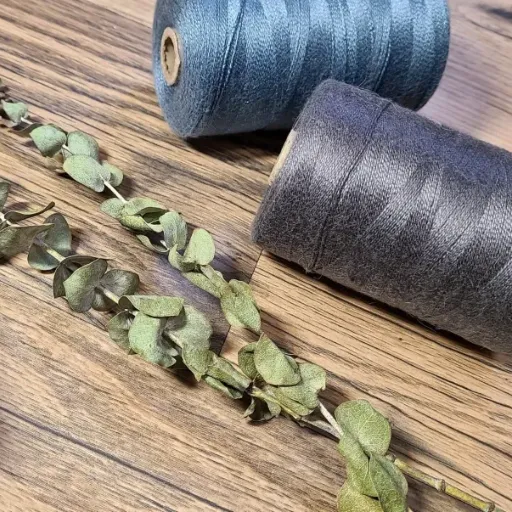
Characteristics of Viscose Rayon
While viscose rayon is believed to be the fabric with silky smoothness and finish among textiles, this fabric replicates with the natural fibers such as cotton or silk that have subtle texture on them. This flexibility allows viscose to be broadly used for various types of apparel, from casual wear to fashion needs. It is popular in a warmer climate due to its extremely light body and enough breathability.
Key Features of Viscose Rayon
- Excellent moisture absorption for enhanced comfort in hot and humid conditions
- Superior dye affinity resulting in vibrant, long-lasting colors
- Silky smooth texture that replicates natural fibers
- Lightweight and breathable for all-day comfort
On the other hand, certain things need to be taken into consideration. When wet, viscose rayon loses its strength quite considerably and washes make it delicate. For the longevity and presentable look of the garment, care must be bestowed to the used cleaning methods; if possible, gentle hand wash or dry clean should be preferred. This blend of comfort, fashion, and practicality keeps it in demand as a coveted fabric choice.
Comparison with Other Fibers: Cotton, Polyester, and Silk
| Fiber Type | Origin | Key Strengths | Best Use |
|---|---|---|---|
| Viscose | Semi-synthetic (regenerated cellulose) | Soft, excellent drape, affordable, superior dye affinity | Fashion garments, comfortable clothing |
| Cotton | Natural (plant fiber) | Breathable, durable when wet, hypoallergenic | Everyday wear, heavy-duty use |
| Polyester | Synthetic (petroleum-based) | Strong, fast-drying, shrink-resistant, durable | Activewear, outdoor clothing |
| Silk | Natural (protein fiber) | Luxurious sheen, excellent temperature regulation, strong | High-end fashion, luxury garments |
Viscose vs Cotton
Comparing viscose rayon with cotton, the primary distinction lies with their origin. Cotton is a natural fiber derived from the seed hairs of cotton plant and is therefore inherently breathable, durable, and hypoallergenic. Viscose is a semi-synthetic fiber made out of cellulose. Viscose may be softer, giving it an advantageous appeal over cotton in terms of comfort. The latter being more durable, especially when wet, makes it stronger and capable of withstanding day-to-day use.
Viscose vs Polyester
Compared to polyester, viscose offers a completely different set of characteristics in relation to breathability and feel. Polyester being a synthetic polymer is highly strong, fast-drying, and shrink-resistant. But in the process, admittedly, it may have to compromise a bit on the softness and breathability that Viscose offers, which are the most desired properties among consumers. Viscose has a much nicer drape and feel that is closer to natural fibers, but on the durability front, it loses big to polyester, especially when handled roughly or in contact with water. That is why polyester is targeted at activewear and viscose, on the other hand, finds its best use in fashion and comfortable clothes.
Viscose vs Silk
Silk is typically pitted against viscose for their sheen and luxurious feel. Being a fully natural protein fiber, silk stands in a class of its own. Both fabrics have almost the same softness and gentleness, but the strength and durability of silk surpass that of viscose, providing the latter is cared for properly. It also provides great temperature regulation: cool in summer and warm in winter. Besides being priced lower, viscose provides a silk-like appearance at a bargain price but requires a lot of care because its prone to damage when wet or washed improperly. Thus, silk and viscose both speak of elegance, whereas the silk variety is more expensive and less demanding in care, making a suitable fit for one preference while the other is much less demanding in price and a bit more demanding in care.
Eco-Friendly Aspects of Viscose
Fondly called a semi-sustainable fabric, the eco-friendliness of viscose depends largely on the method used to produce it. Being generated from natural wood pulp, viscose is biodegradable: it decomposes naturally in the environment over time without giving out chemicals that harm the fauna or flora. Hence, its characteristic sets it apart from synthetic fabrics such as polyester, which may give rise to microplastic pollution.
✓ Environmental Benefits
- Biodegradable material
- Made from renewable wood pulp
- No microplastic pollution
- Closed-loop production available
✗ Environmental Concerns
- Chemical usage (carbon disulfide, sodium hydroxide)
- Potential water and air pollution
- Risk of deforestation
- Traditional production methods harmful
Nonetheless, the legitimate traditional production of viscose would be deemed quite environmentally unfriendly. The production process usually opens itself to chemical usage-from carbon disulfide up to sodium hydroxide. Should error in handling or discharging occur, it becomes an environmental disaster as water or air pollution besiege the local environment and communities. Also, the procurement of wood pulp for making viscose may give way to deforestation if manufacturers pay no heed to sustainability measures in forestry practices.
More environmentally friendly viscose production methods are being adopted by manufacturers. They are alternatives to closed-loop production systems, where chemical waste is recycled and kept from being discharged, preventing emissions and wastage of resources into land or water. Thus, supporting such companies and others that employ sustainable materials to lessen the impact of viscose production on the environment will help shape a more responsible, textile industry.
Applications of Viscose Rayon Yarns
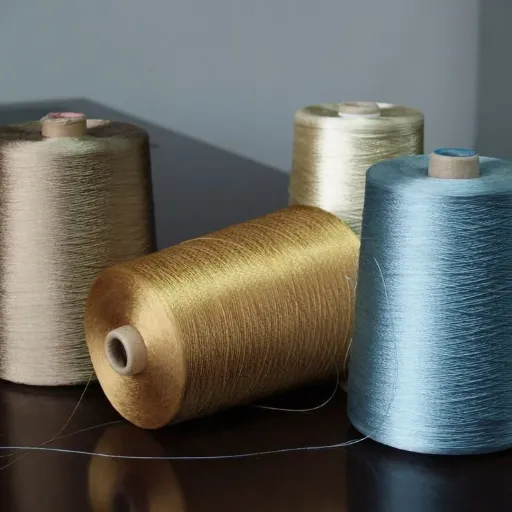
Fashion and Textile Industry
The fashion and textile industry having practicability to attract viscose rayon yarns for use were soft and cheap. These yarns are considered a good alternative to natural fibers such as cotton or silk as they offer similar properties but at a much lower cost. Other than cheap, viscose polyesters are easily dyed, and when touched, the surface feels smooth ensuring good working experiences for fabric sellers in the production of various garments such as dresses, blouses, linings, tow costing, and lightweight suits.
The rest of the applications for viscose rayon yarns go toward making fabrics that are breathable and comfortable. Since they absorb moisture, they are the very perfect textile for making clothes for high temperatures or active wear. These yarns give comfort and style to a consumer whose consciousness is focused on quality and good-price apparel.
In beyond clothing, another application of viscose rayon are interior textiles such as for curtains, uppholstery, and bed linens. Being able to imitate a most elegant look under this application adds some glamour for home décor so that it becomes an actual choice for interior design. Adaptability of the material basically contributes much to its popularity in the fashion and textile fields.
Use in Home Decor and Upholstery
This brings viscose rayon to the world of homes and furnishings, where it gives its versatile and sleek appearance to the interiors. It’s used for curtains and upholstery as well as bed linens, and in all these cases, its ability to look like and feel like glamorous materials sets the tone for a refined atmosphere. Both the designers and homeowners appreciate the elegance of the fabric, which allows them to render spaces with an upscale finish without shelling out the exorbitant price for luxury-grade materials.
Home Decor Applications
- Curtains: Elegant drape and lustrous appearance
- Upholstery: Soft texture and refined finish
- Bed Linens: Comfortable and luxurious feel
- Decorative Elements: Versatile design possibilities
Also, an important advantage that viscose rayon offers in interior home decoration is that it is versatile. This very material can be dyed in almost every conceivable color and design, allowing for infinite possibilities in personalized interior design. It is soft and lightweight and that is a key factor of comfort with well-appearing furnishings. In addition, it enhances durability when blended with other fibers, providing practical solutions for different home environments.
Despite being the best option for appearance and versatility in home decor, it has really undeserving hype for its care concerns. It is sensitive to moisture and gets weakened if wet; hence, careful cleaning is advised-any lustrous cleaning method like dry cleaning is preferred. Nevertheless, for those who wish to achieve a comfortable balance between practicality and aesthetics, viscose rayon continues to remain a cherished material in the world of home decorating and upholstery.
Industrial Applications of Rayon Viscose
Rayon viscose has been found to have a host of industrial uses owing to the variety of types, costs, and adequate properties that it offers. In everyday textile industries for making fabrics for making clothing, upholstery, and linens, it finds its use. Such fabrics provide the feeling of luxury from natural fibers, such as silk and cotton, yet at a reasonable price. The breathability and softness of rayon viscose lend it as a probable choice for garments such as dresses, shirts, and sport attire.
| Industry Sector | Applications | Key Benefits |
|---|---|---|
| Textile & Apparel | Clothing, upholstery, linens | Luxury feel at affordable price |
| Medical & Hygiene | Wipes, bandages, sanitary products | High absorbency, biodegradable |
| Automotive | Tire cord for rubber reinforcement | Strength, adhesion properties |
| Industrial Filtration | Mechanical and chemical filtration | Precise filtration capabilities |
Rayon viscose has applications beyond just textiles for non-woven products. The high absorbency and softness of the material make it ideal for wipes, medical bandages, and sanitary products. In specific applications, being biodegradable is better for the environment and puts less pressure compared to synthetic options. To further increase its usefulness in the process, it can be formulated to meet specific performance needs.
It easily fits into technical applications as well. Thus, it is used in tire cord rayon viscose to reinforce rubber compounds in automotive technology because of its strength and adhesion properties. Its adaptability extends to filtering industrial activities where it can fasten accurate filtration of mechanical and chemical processes. Industrial vis-a-vis commercial implication reveals the vastness to which rayon viscose is applied.
Current Market Trends
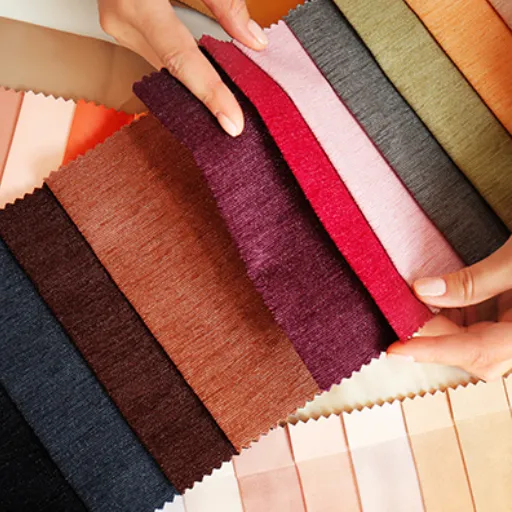
Demand and Supply Dynamics of Viscose Yarn
Changing demand for viscose yarn is on the rise, thanks to its multifaceted nature and its use in textiles, apparel, and industrial products. Another factor that makes it favorable to markets with sustainable practices is its biodegradability and eco-friendliness. In recent times, the increasing preference for natural and comfortable fibers has emerged as an alternative for viscose yarn against synthetics, driving demand at a global scale.
Supply-wise, production has been constrained due to raw material restrictions and wood pulp prices, with environmental laws regulating the process. Most producers have been retrofitting their manufacturing operations to abide by stringent environmental standards, thereby affecting overall capacity and production cost. Supply chain disruptions and energy prices also maintain their influence on variances in viscose yarn supply.
However, the market is still competitive. Producers are trying to align production increases with technological and sustainable options to fulfill the demand. This phenomenon, wherein demand meets an environmentally conscious supply, brings alternate choices for an evolving landscape of a market that accepts growth as well as sustainability.
Impact of Sustainable Fashion on Viscose Popularity
Sustainable fashion might be what has given a new lease of life to viscose, being deemed an environmentally preferable alternative to synthetic fibers. Viscose, on the other hand, exists in a curious duality: natural materials derived from plants and an increasing demand by consumers for fabric that is sustainable and biodegradable. This demand has put pressure on the producers to adopt more sustainable methods of production, such as those developed in closed-loop processes that minimize environmental impact by recycling chemicals and reducing waste.
Sustainable Fashion Drivers
- Consumer Awareness: Growing consciousness about environmental footprint of fashion
- Biodegradability: Viscose decomposes naturally unlike synthetic fibers
- Closed-Loop Production: Recycling chemicals and reducing waste
- Responsible Sourcing: Sustainable forestry practices and transparent supply chains
The growing awareness in consumers about the environmental footprint of the fashion industry has lent an attractive edge to viscose. Contrasted with polyester and other synthetic fibers, viscose is one fabric that feels good on skin; it is breathable and can be dissolved in the environment quite well. With responsible sourcing and manufacturing practices, viscose can be positioned as one avenue through which brands can fulfill their sustainability agendas while accommodating consumers’ demands for green apparel.
However, while it becomes more acceptable, the demand for viscose needs to confront the challenges posed by production. Traditional ways of manufacture were often challenged on their environmental grounds for deforestation and use of chemicals. To really encompass the emerging wave of sustainable fashion, producers must work at ensuring transparent and responsible supply chains while improving their technology. This development within the industry stands as evidence for the growing equilibrating act between meeting consumer expectations and ecological responsibilities.
Exploring Circular Economies in Textile Production
A textile-industrial system operating in a circular economy works to diminish waste and maximize efficiency in resource use at all times during the life cycle of a garment. Circular production systems lean more toward reuse, recycling, and obtaining materials in a sustainable manner, as opposed to the traditional linear method of designing, producing, consuming, and disposing. Thus, those textiles can be converted for any other use or production purpose, rendering sustainability and lessening pollution.
🔄 Durable Design
Products designed for longevity, reducing overall demand for new resources
♻️ Recycling
Transforming materials into new fabrics, reducing virgin raw material dependency
🔧 Repair & Resale
Extending product life cycles through repair programs and second-hand markets
🌱 Biodegradable Materials
Using materials that naturally decompose, eliminating waste scenarios
In this way, the textile industry has embraced circularity to keep its step with the environment, thereby greatly contributing to reducing the ecological implications it might have had. Circular economies help in cutting greenhouse gases, saving water, and preventing wastes. Of course, it offers employment opportunities in recycling, repairing, and reselling. Transitioning to such a system would demand committing, innovating, and mobilizing all areas of supply chains in both the material and technology realm, which will finally stand-in aid of the consumer for common success.
Working with Viscose Yarn
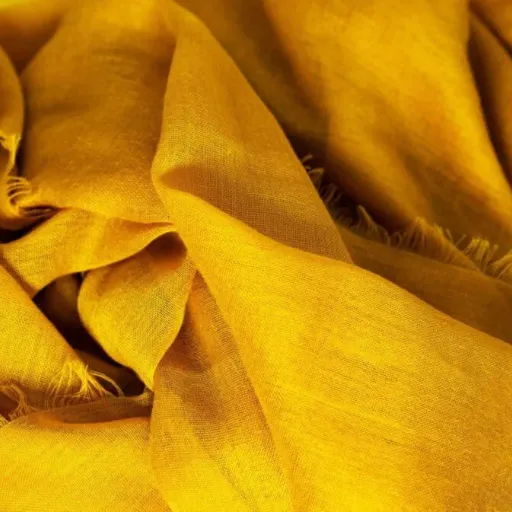
Knitting and Crocheting: Essential Tips
Knowing the unique properties of a viscose yarn and how to handle it is very important. Since viscose yarn is noted for a silky feel and graceful draping, it is often chosen as suitable for delicate lightweight apparel and fine accessories. On the downside, the fiber is just a tad slippery and stretches easily-if you are in knitting or crocheting, this becomes a real drawback.
Best Practices for Working with Viscose Yarn
- Tool Selection: Choose knitting needles or crochet hooks with slightly rough texture to hold slippery yarn
- Needle Size: Use a size smaller than recommended for better structure and reduced sagging
- Tension Control: Avoid overstretching to maintain shape and drape
- Blocking: Finish projects by blocking to calm the yarn, bring out natural sheen, and set dimensions
Good results come also from having the right tools: choose knitting needles or crochet hooks with a slightly rough texture, to ensure that they hold on to the slippery yarn well. Also, try using a hook or needle size smaller than recommended-the finished fabric works better as it gains more structure and resists sagging.
Maintaining tension is important when working with viscose yarn. Try not to overstretch it, because it will change the shape and drape of whatever you are making. Blocking is the finishing process for a project, calming down the yarn, bringing out its natural sheen, and holding it in its intended dimensions and shape. By sticking to these fine best practices, you will be sure to make beautiful, hard-wearing designs with viscose yarn.
Tips for Embroidery and Fabric Handling
Fabric for embroidery has to be prepared well for the best results. Always start with an appropriate fabric for your project. Cotton, linen, or blends of these too work best for embroidery because they provide support in holding the stitches. Before anything else, wash and iron the fabric, as manufacturers put them on to prevent wrinkles while stitching.
Embroidery Preparation Steps
- Select appropriate fabric (cotton, linen, or blends)
- Wash and iron fabric to remove manufacturing treatments
- Use embroidery hoop or frame to maintain fabric tension
- Apply stabilizer for light, stretchable, or thin fabrics
- Execute embroidery design with consistent tension
- Secure stitches and finish with gentle washing if needed
Stability is necessary to achieve exact and even embroidery. Using an embroidery hoop or frame will keep your fabric taut as you work. This prevents puckering and helps keep tension consistent during stitching. If the fabric is light, stretchable, or thin, a stabilizer may be used. Stabilizers provide that little extra firmness to help execute intricate designs without affecting the fabric itself.
While finishing your embroidered piece, ensure to secure stitches from unravelling; cut out the explosive threads at the fabric’s back and then gently iron the embroidery design. Wash it with mild detergent if required, but do never agitate it harshly. Proper preparation and finishing will only guarantee that your embroidery work remains attractive and lasts a long time.
Creating Summer Clothes with Viscose Rayon
Because it is lightweight and air-permeable, viscose is an excellent choice for summer clothes. As it is manufactured from natural cellulose fiber, air is able to pass, giving it a non-clingy effect during hot humid weather. Therefore, it is nice and cool during hot weather.
☀️ Breathability
Allows air circulation, keeping you cool in hot, humid weather
✨ Soft & Smooth
Silky texture against skin with beautiful drape
💧 Moisture Absorption
Wicks sweat away, keeping you fresh
🎨 Vibrant Colors
Accepts dyes easily for bright summer prints
Another advantage is that viscose rayon feels soft and smooth against the skin. It forms a nice drape, giving the lustrous effects needed; viscuous rayon will pair well with most summer casual or semi-formal outfits. Another thing that makes it versatile is the fact that dresses, skirts, and light tops can be all made with viscose rayon.
The other good factor about viscose rayon lies in that it absorbs moisture, keeping sweat away so the wearer remains fresh. This, in addition to keeping it cheap and easy to dye in all kinds of bright summer garnishments and prints, makes viscose one of the best fabrics from which to build a very stylish and comfortable summer wardrobe.
Frequently Asked Questions (FAQ)
Q: What are viscose rayon yarns made of?
A: Viscose rayon yarns are composed of regenerated cellulose fibers that are made up of wood pulp. Natural materials are transformed by means of a viscous solution extruding emerging to the production of the yarn. A soft, glade, versatile application in textiles would do well for the fiber.
Q: How are viscose rayon yarns different from cotton or wool yarns?
A: The difference against cotton or wool lies in viscose rayon yarns being the product of a chemical process that dissolves cellulose in a solvent to create a viscous solution. The presence of distinctive properties secondary to this tanning or dyeing gives the fabrics with which these yarns are made better aesthetic and tactile qualities.
Q: What are the properties of viscose rayon yarns?
A: The key properties are very good moisture absorption, smoothness, and lightness. It also drapes well for shawls, scarves, and household textiles. They can be machine washed and made convenient for everyday use.
Q: Are viscose rayon yarns eco-friendly?
A: Yes, viscose rayon yarns can be eco-friendly when sustainability practices are maintained. The source material or raw material from which the yarns derive is wood and, therefore, biodegradable and renewable. The brands should be selected on an eco-friendly pathway that considers applying responsible procedures during manufacturing.
Q: Can viscose rayon yarns produce knitwear like sweaters?
A: Yes! Viscose rayon yarns are fabulous for knitwear such as sweaters because they are soft to touch and have excellent drape. This yarn soaks up moisture, which adds to the comfort, making it an ideal pick for garments that ought to be lightweight and breathable.
Q: How do the color and texture of viscose rayon yarn affect the finished product?
A: Color and texture of viscose rayon yarn create a finishing product with considerable aesthetic appeal. Viscose yarns may be dyed into vibrant colors while their opacity promotes enhanced textural qualities onto the fabric. This would raise the overall visual impact of decorative items and fashion apparel.
Q: What are the common uses of viscose rayon yarns?
A: They have versatility and range of application in apparel, home textiles, and accessories. They are usually soft to brown wool that cannot be absorbed by moisture; in contrast, they enhance scarf properties when blended with other fibers.
Q: Are viscose rayon yarns flammable?
A: Generally, viscose rayon yarns are safe to use; however, it is flammable. This property has to be taken into consideration while utilizing it in elements that will have checking for heat or flames.
Q: Why is the coagulation bath important in the production of viscose rayon yarns?
A: The coagulation bath is one of the most important production steps in which cellulose is made solid, that is, the viscous solution solidifies into fibers. This process determines the strength and texture of the yarn and affects how its durability would be exploited in various textile applications.
Q: Can viscose rayon yarns be utilized for decorative purposes?
A: Indeed, viscose rayon yarns are used for decorative purposes as they allow for vibrant colors and unique textures. They are popularly used in art silk-based products and can be enhanced with metallic additives to provide for even richer effects, which makes them suitable for several forms of craftwork and adornments.
References
-
Rayon, Modal & Viscose Yarns – Michigan Fine Yarns – Information on the luxurious and soft properties of viscose yarns, ideal for draping garments and delicate projects.
-
Viscose rayon – the oldest man-made fiber – Swicofil – Details on viscose rayon as the first man-made natural filament yarn, used in apparel and domestic textiles.
-
Viscose Rayon Fiber Manufacturing Process – Textile Sphere – A comprehensive guide to the manufacturing process of viscose rayon, including steps like steeping, shredding, and spinning.
-
Viscose Rayon Manufacturing Process – Colossus Tex – Insights into the viscose process, where cellulose fibers are regenerated to produce fabric.









